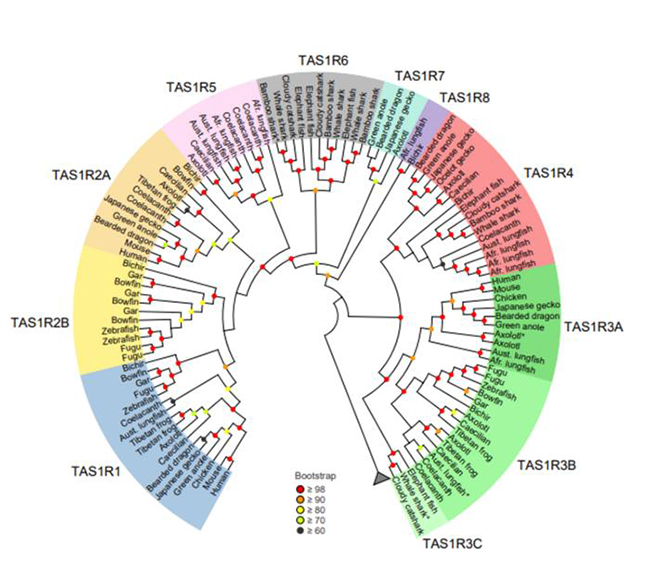Unraveling the evolutionary origins of umami and sweet taste preferences
Press release
A vertebrate-wide catalogue of T1R receptors reveals diversity in taste perception
Hidenori Nishihara, Yasuka Toda, Tae Kuramoto, Kota Kamohara, Azusa Goto, Kyoko Hoshino, Shinji Okada, Shigehiro Kuraku, Masataka Okabe, Yoshiro Ishimaru
Nature Ecology & Evolution 2023 Dec 13 DOI:10.1038/s41559-023-02258-8
![]() Press release (In Japanese only)
Press release (In Japanese only)
EurekAlert! link about this artcle
The perception of taste is one of the most important senses and helps us identify beneficial foods and avoid harmful substances. For instance, our fondness for sweet and savory foods results from our need to consume carbohydrates and proteins. Given their importance as an evolutionary trait, researchers around the world are investigating how taste receptors originated and evolved over a period of time. Obtaining these insights into the feeding behavior of organisms can help them paint a picture of the history of life on Earth. read more>

Figure: A new study led by researchers from Kindai University identified five new groups of umami and sweet taste receptors within the TAS1R family (TAS1R 4, 5, 6, 7, and 8) and also diversity in TAS1R2 and TAS1R3 genes.















